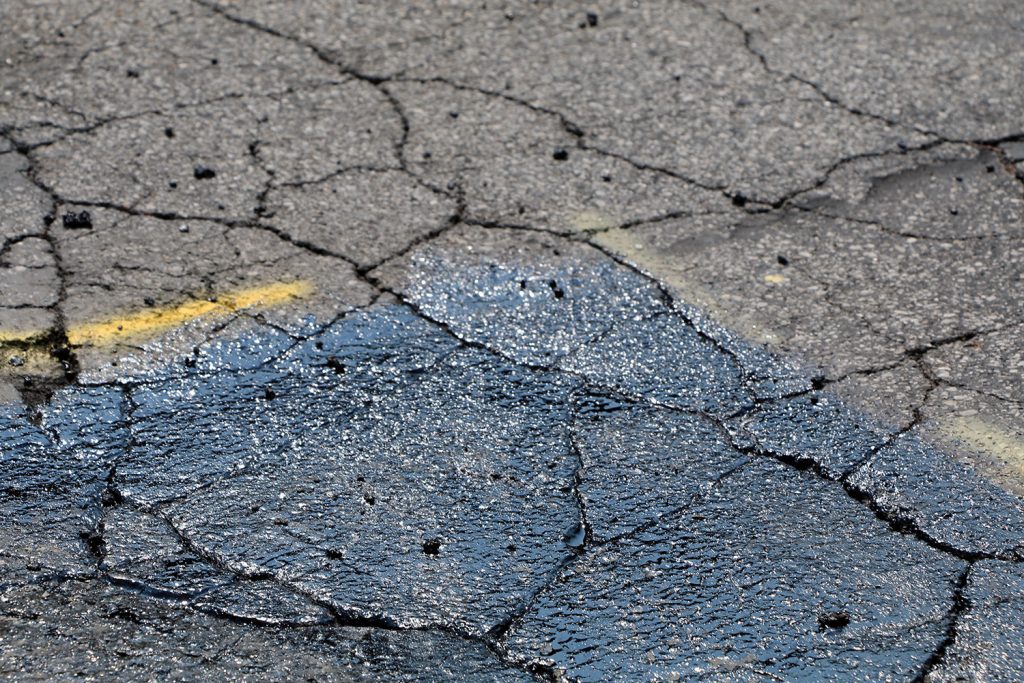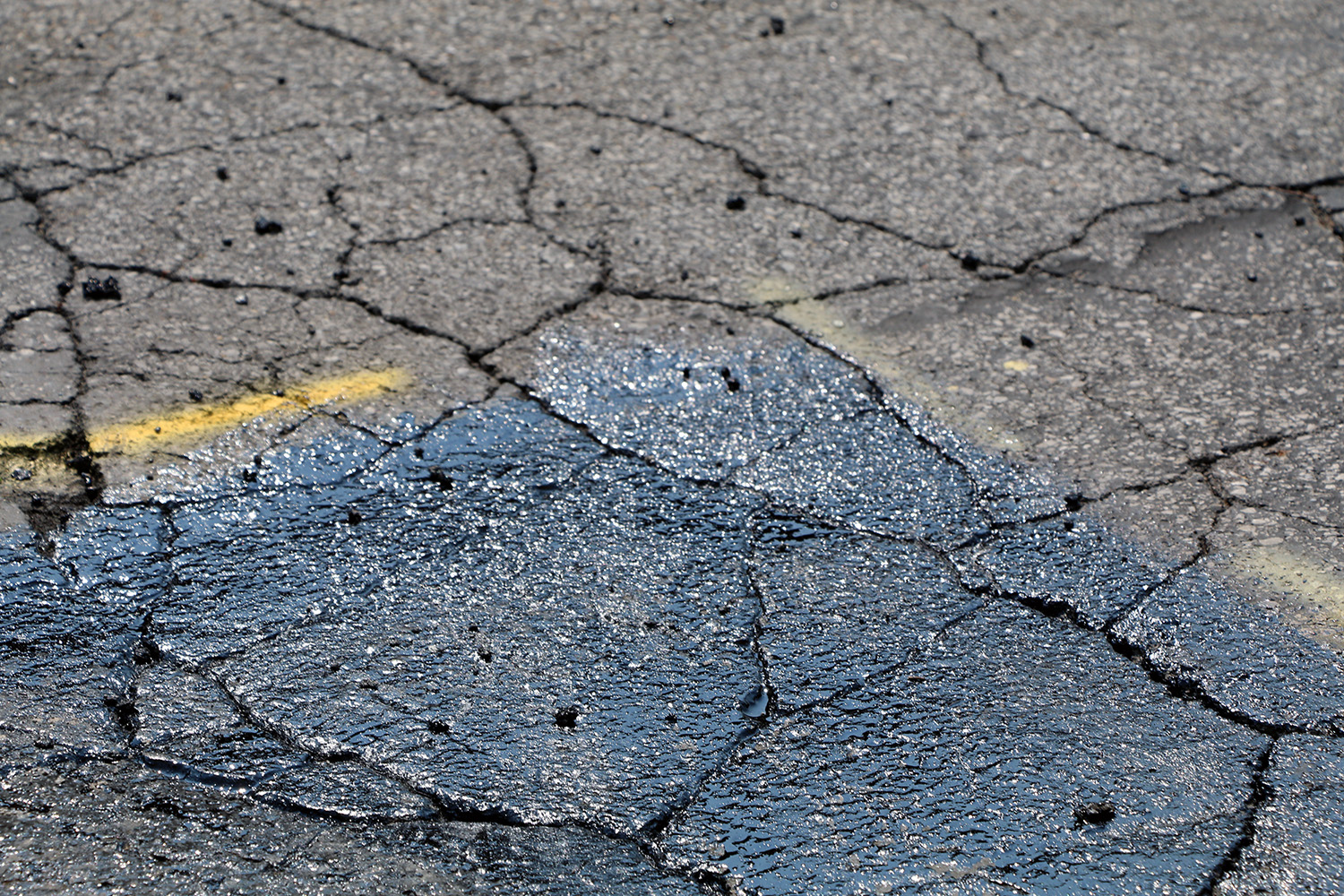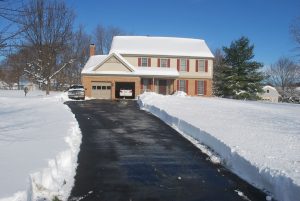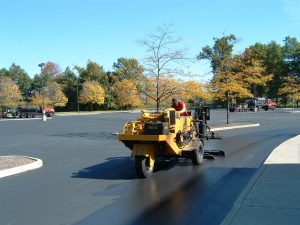
A properly paved surface should be durable, clean, and convenient to use. With proper care and maintenance, asphalt surfaces have a lifespan of between 15 and 20 years. However, as your asphalt ages and experiences traffic repetitions, pavement distresses can begin to accumulate. Asphalt that is not properly maintained will start to visibly deteriorate within 3 to 5 years. Nevertheless, you may not know what is wrong with your asphalt if it were to start deteriorating. Here is what your asphalt is trying to tell you for some common problems.
Rutting
Rutting is the term for longitudinal indentations in the pavement that follow the path of traffic. It shows up in wheel paths because traffic loads apply the most pressure, leading to recurring stress. In general, rutting is the indication that the pavement cannot support the traffic loads that it is being subjected to. Rutting can be caused by insufficient asphalt thickness, lack of compaction during installation, weakness in the layers due to moisture, weak asphalt mixtures, and the lateral movement of surface layers when subjected to heavy traffic. Ruts present a driving hazard as water pools up in them. This increases the possibility of hydroplaning. In addition, the direction of a vehicle can be altered when encountering a rut at high speed.
Flushing
Flushing describes smooth, shiny patches on asphalt that appear in the wheel paths. It is the result of too much asphalt cement being added to the mix, causing excess binder building up on the surface layer of the pavement. Instead of being a liquid, it is a semi-solid or solid. Flushing can occur even after the surface is properly set. The pavement may appear darker or discolored during moderate stages of flushing. As flushing increases, the surface may lose texture or appear glossy and shiny. Severe flushing will begin to show tire marks in the asphalt when the weather is warm. Flushing normally appears during the first few years of the pavement’s life, and correction involved removing the existing asphalt and replacing it.
Edge Cracks
Edge cracks are cracks that appear along the outside edges of the pavement. These cracks are long and run in the direction of the road. Edge cracks happen when the asphalt surface is too thin causing a lack of support. When your asphalt is too thin, it can cause cracks when the underlying material settles, when the soil dries out and shrinks, if the base is weak, when there is poor drainage, if there is a frost heave and when there is heavy traffic or vegetation along the edge. There are a few ways you can prevent future edge cracks when repairing current ones. Drainage around the asphalt should be improved. In addition, vegetation should be removed from the edges of the paved surface. You can also install curbing or edging along the surface to help keep the edges from breaking off.
Alligator Cracking
Fatigue, or alligator, cracking is one of the most common ways for asphalt to deteriorate over time. These cracking patterns resemble the scales on reptiles back or the cracking you see if you dropped a hard-boiled egg. This condition can be caused by water penetrating beneath the pavement. This can cause the foundation to destabilize. It also happens when there is not enough compaction during installation, when the pavement is too thin, if there are excessive loads, if there is poor drainage, or when there is a weak base. If the base is not compacted properly, it will shift once exposed to constant traffic, causing cracks. Once the cracks hit the base, water is allowed to them, accelerating the deterioration and causing the asphalt to crumble. Unfortunatly, this is one of the most serious problems that can develop, especially if it does without repair. Removing the defective asphalt and compacting the base prior to installing new asphalt is the only solution.
Raveling
Reveling is the wearing away of the pavement materials from the asphalt cement. The binder acts like glue that holds stone and sand particles together. When that starts deteriorating, the stone and sand will loosen and breakaway from the pavement surface, making it thinner as it deteriorates. This creates a void for water to penetrate into the base material. Water can also collect in raveled locations, causing a loss of skid resistance and possible hydroplaning. A raveled pavement can be repaired when the root cause of the damage is determined. You can have small, localized areas of raveling, which then the raveled pavement would need to be removed and patched. Large raveled areas are an indication of general asphalt failure. The damaged pavement would need to be removed and overlayed with new pavement.
Call Supreme Sealing
By utilizing machinery designed specifically for sealer application (non spray), we feel we are uniquely qualified to give our clients a professional and cost efficient way of maintaining their parking area investment.



